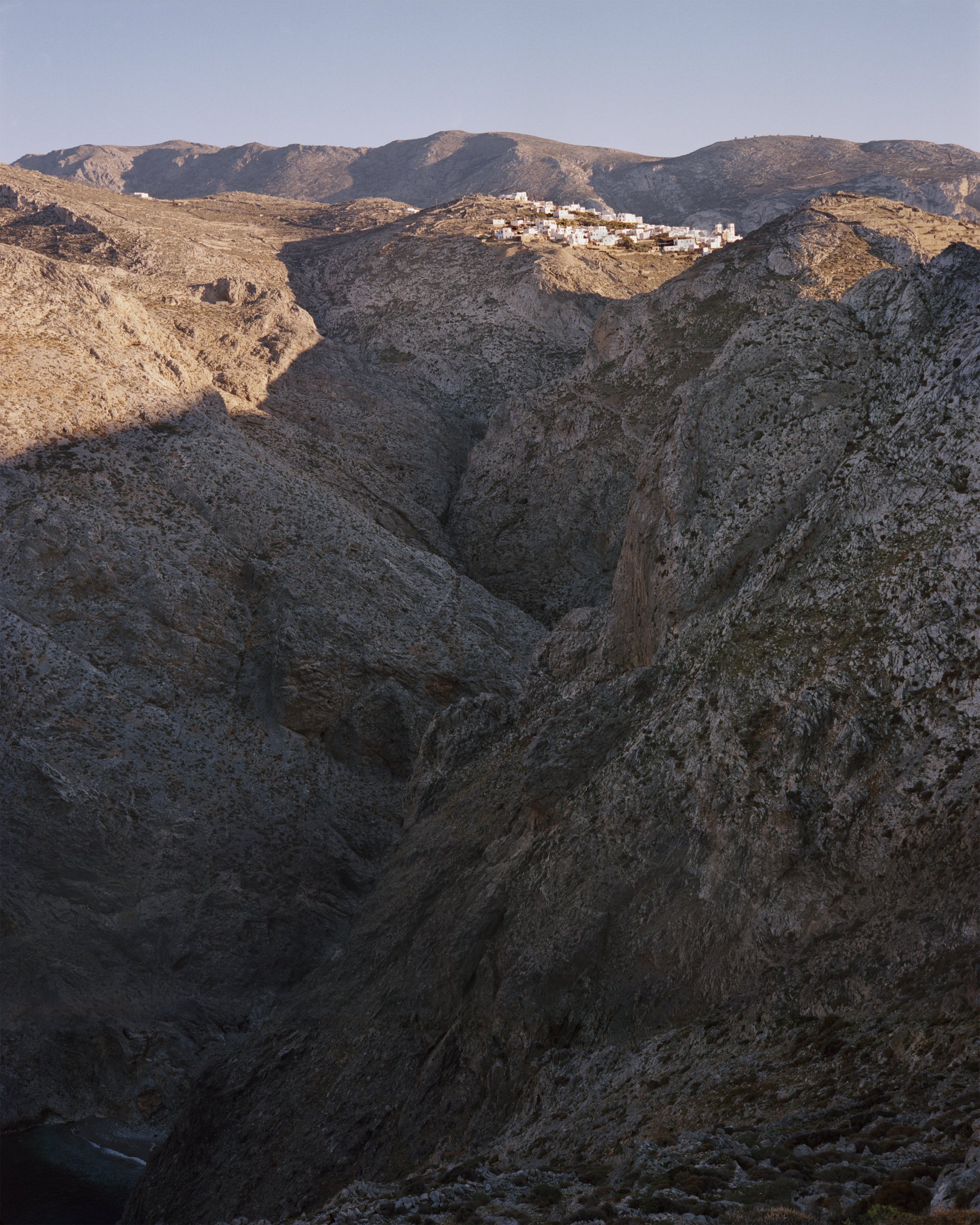Les rochers fauves
The story of "les rochers fauves" is mainly the questioning about the "islandness". In his new series, Clément Chapillon questions the notion of geographical and mental isolation through an island space lost in the Aegean Sea. If the word "isolated" literally means "shaped like an island", we can rightly ask ourselves what form do the time, the other, beliefs and the imaginary take in this finite world bordered by the infinite. For the past twenty years, Clément Chapillon has been regularly visiting the island of Amorgos, located in the heart of the Greek Cyclades archipelago. He has put together a narrative in images that is both documentary and metaphorical about the contradictory feelings provoked by the insularity of this rocky, arid and wild territory.
We will show you how the studio bring this work to life, working on various scenographies for 4 exhibitions with Polka Paris , Le Lieu Galerie, festival étés Indiens in Arles and Hangar Photo Center. It was an extraordinary experience to be able to propose such a unique scenographic experience for each place. Rethinking the narrative, the size of the images, the types of printing and framing, the films, but also all the objects that will plunge us into the heart of insularity. We will also share the beautiful work of dunes editions a young publisher who made a great monography «Les rochers fauves » which is already sold out after a few months of launch.
“Insularity is isolation. Islandness is rupture.
A broken link with the rest of the world and therefore a space outside of space, a place outside of time, a naked place, an absolute place. ”
“You feel far away, isolated, and it creates a mental space where the real becomes very porous with the imaginary”
This picture was taken underwater with an old analog camera were used in different exhibitions with several medium. Each one was a new installation where the picture reveal a different meaning. The first one was at the first door of Le Lieu galerie where you have to cross this paper to come inside the exhibition as if you need to cross the sea to come inside the new island territory. At @lehangar, it was printed on transparent glass where you can watch the fishes and the colors from both parts of the wall, revealing its translucent dimension of the water.
“The exhibtion in Galerie Le Lieu in Lorient was the biggest and most creative exhibition we made thanks to the amazing and passionnante team. We wanted to create a journey where the visitor feels the island duality from the white rocks to the dark sea with sounds, films, negatives contact sheet, icônes, stones, films”
“Despite its postcard look, Amorgos island
is one of the poorest and least densely populated of all Greece, but also one of the most fascinating. Under the unspeakable beauty of the lights and landscapes, a difficult, sometimes tragic human condition is hidden.”
“The mystery of this island territory begins with its name, “Amorgos”, which according to some sources comes from the red color of a mineral lichen that used to grow here. But its mystery extends far beyond that: with its jagged relief and its line of ridges emerging from the sea, Amorgos creates a vertigo”
“It is through this prism that he has constructed his documentary story, between legend and reality, a permanent oscillation between mythical and vernacular poetry.”
“My journey to Greece was punctuated by spiritual apparitions”
“Dunes Edition is a publisher that has created a monography called “les rochers fauves” with this series, creating the principle of tracing paper that offers different readings of the same text. Through this game of transparency and opacity, the system translates a kind of island poetry as experienced by the author Gaston Deschamps in the late 19th century and by the photographer Clément Chapillon today.”
“Stavros has always been there. On every trip, I found him in his car, on the road between Aigiali and Langada. On each trip, I have photographed him. Always the same portrait, this look that glares at me in his door frame. He always has the same intensity in his eyes, at the same time soft and rough, full of melancholic sadness”
“The wind has shaped the few surviving trees like human psyches, but do the low stone walls protect them from madness? The 800-meter-high mountains stop the clouds, a drama is always possible, but who will know? Attentive to the apparitions, Clément Chapillon observes with calm the rough simplicity of a people conscious of belonging to the rough and magnificent sphere of the myth.”
“Amorgos creates a vertigo. Its dark silhouette and its mineral character remind us of our condition of human lost in the middle of the water. Its mountains rise to more than 800 meters, they are the highest in the region and hold back the clouds. They create unique lights, sometimes soothing, sometimes threatening, but always mysterious.”






































